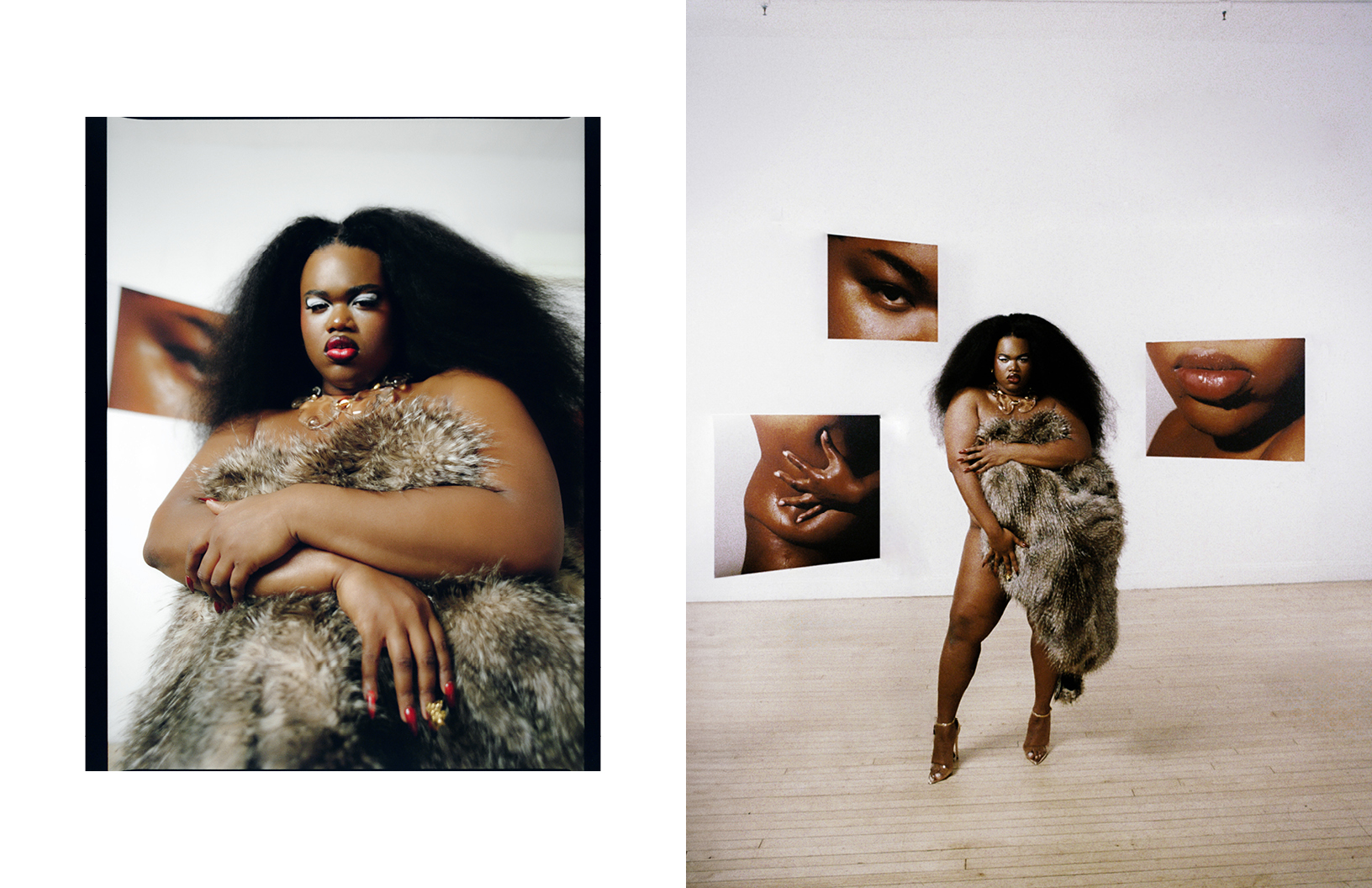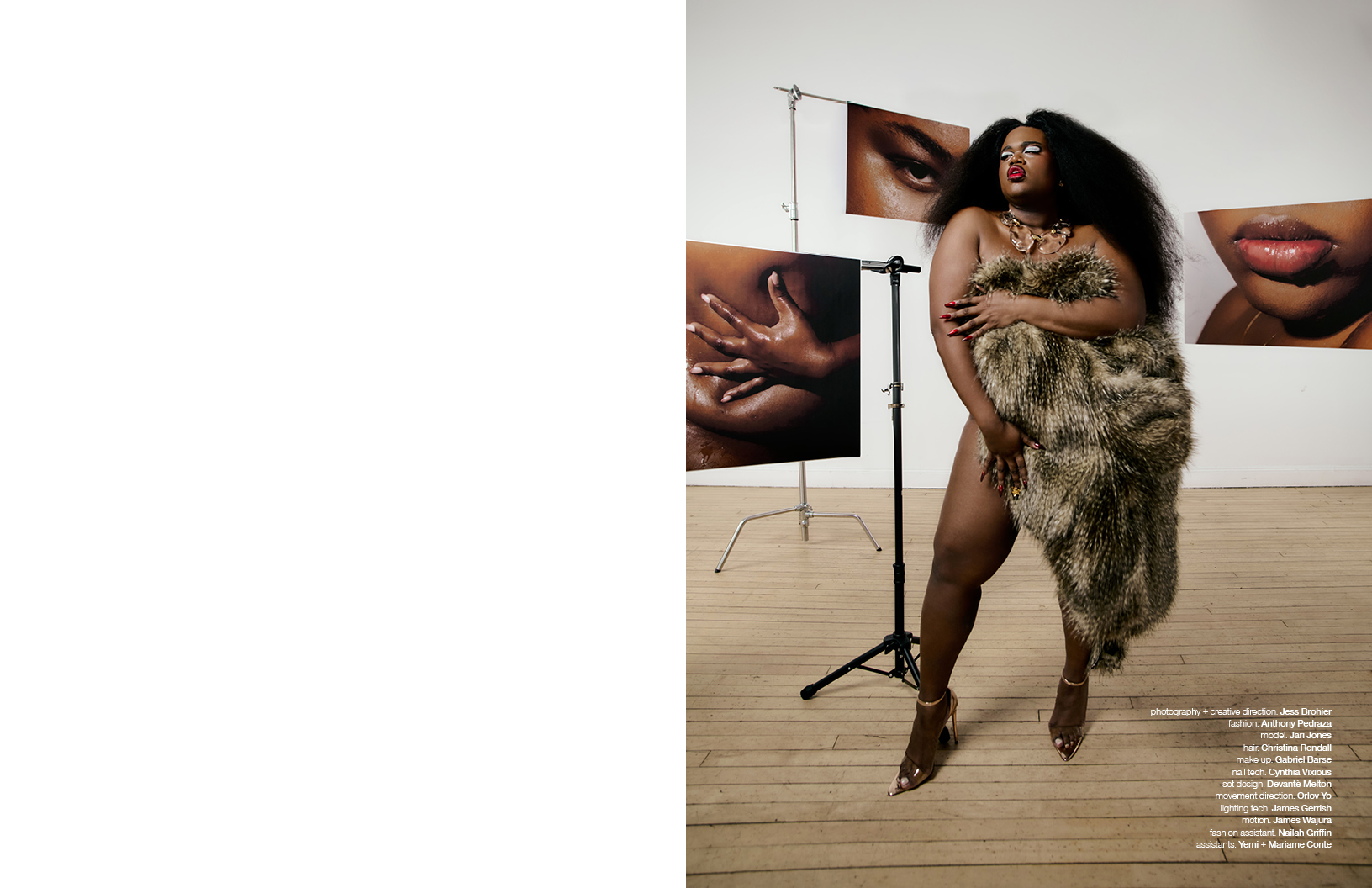Jari Jones steps into every room with the weight of history on her shoulders and the brilliance of possibility in her eyes. Model, actress, producer, and cultural disruptor, she has become a symbol of what happens when a Black trans woman refuses to fold under the pressure to disappear. Her existence is not just visible, it is undeniable, and her voice is louder and more necessary than ever.
“The art chose us, and the activism was born out of survival,” she says to Schön!, reflecting on a journey that has never been simple and never been safe. For Jari, creativity has always been instinct, not strategy. It was the thing that saved her long before the world was ready to applaud. Her latest role in ‘Ponyboi’ speaks to everything she stands for. In the groundbreaking film created by intersex writer and actor River Gallo, Jari plays Foxxy, a Black trans sex worker portrayed with a complexity rarely seen on screen. It is a performance built from lived experience, from quiet rage, and from the need to tell stories that matter. “Transness isn’t a monolith,” she says. “Every character, every person, holds a different truth.
Can you share a bit about your background and what inspired you to pursue a career in the arts and activism?
I think I can speak for most Black Trans and Queer folks when I say the art chose us, and the activism was born out of survival. I’ve always been enamoured with the idea of creation. Fashion, visual art, music, acting, these were never optional for me. They were my path, even if I didn’t yet know how I’d get there. Activism came out of necessity. I remember being labelled an activist early on, and it felt strange because all I was doing was surviving. I was sticking up for myself and others who looked like me, who shared my lived experience. Because if I didn’t, I could’ve easily become another name, another loss in our community. As Black Queer people, activism chooses us.
What were some key moments or challenges early in your career that shaped who you are today?
Being a joyful, self-loving, free Black trans woman seemed to throw people into a frenzy. Society reacted harshly through cruel memes, death threats, and sometimes verbal violence in real life. It was like the world screamed, “How dare this FAT BLACK TRANS WOMAN find success, love, representation and actually enjoy it?” I had to unlearn and unpack those hateful words thrown at me. They didn’t belong to me. They were projections of how people felt about themselves. And so, I chose love. I surrounded myself with it. I affirmed myself, took joy in the little things… Yes, shopping counts! and decided to always lead with kindness and understanding. Today, I am unbothered but deeply empathetic.

How has your identity influenced the roles and projects you choose?
Choice [laughs]. It’s a funny thing as a Black trans woman in film and television. Truthfully, there isn’t much to choose from. And when there is, the labour of humanizing a queer or trans character beyond stereotype or trauma often falls on us. That labour? It’s exhausting as hell and is severely underpaid. So, when I do get to choose, I move with intention. I never let ignorant writing or stereotypical ideas define how I portray a character. I let them breathe. I build them from their environment, their circumstances, not from a script’s preconceived imagination.
What does representation mean to you, especially as a Black transgender artist?
Representation means true integration, not just tokenism. It’s not about a guest star appearance, a one-off magazine cover, or a single billboard. Real representation looks like Black trans artists being sewn into the very fabric of industries. We need to plant roots, build legacies, and grow. Create our wealth too! We should be centred in the same way our cis counterparts are. That’s when stories are told authentically, when we are in the room shaping them and they are actually worth a damn.
How do you balance your work across acting, modelling, activism, and producing?
I check in with myself constantly. I’ve let go of the idea that I have to do everything and embraced that I can do everything, if I choose. That grace has been everything for me. Sometimes, one part of my life needs more love than the others, and I’ve learned that’s okay. Balance isn’t always symmetry, it’s harmony, it’s a “ does it work for ME”. That mindset has helped me thrive across all my creative expressions.
Growing up, were there any people or experiences that profoundly shaped your creative journey?
Always, always my grandfather, Billy Jones. Or as I called him, “Dad,” because my mom did, and he always said he was too young to be a grandpa. He was one of the first major Black male models in the late ’70s and ’80s — I’m talking GQ covers, vintage KOOL ads, Ebony Fashion Fair. He was my blueprint. As he transitioned into photography, he’d throw my brother and me into major fashion campaigns just because he could, and we loved it! I eventually started behind the camera under his guidance and later found power stepping in front of it, too. I wholeheartedly believe that him teaching me photography made me a better model!
How did you discover your passion for storytelling and performance?
I was that long-winded child who could turn the simplest moment into a full-blown saga. I mean, I would carry! I loved an audience, loved people leaning in. Theatre became my playground. It let me live a hundred lives. As I think about it, Transness without having vocabulary for it, was my first performance… Performing masculinity for safety, dreaming up my own version of girlhood and womanhood. The passion to perform was really just me manifesting the life I wanted.
What were some pivotal moments when you realized your art could make a difference?
The Calvin Klein billboard. Even now, as I talk about it less, everyone else brings it up more. In today’s fashion world, where we’re reverting to thin, white, traditional beauty standards..people are looking back at that moment and saying, “We need more of that.” A plus-size Black trans woman in Calvin Klein? That was and is an iconic shift. It wasn’t just representation, it was a movement, it was a reclamation of space.


